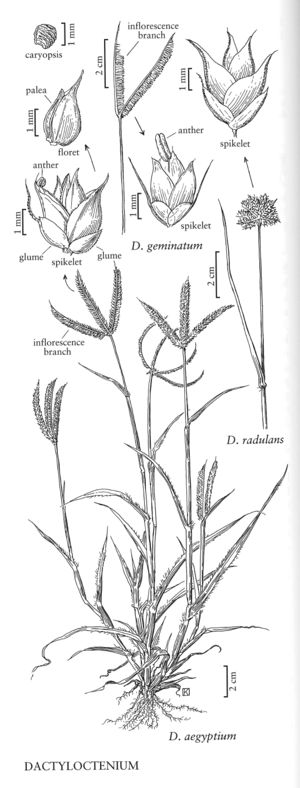Dactyloctenium geminatum
Plants perennial; stoloniferous, mat-forming. Culms 35-112 cm, ascending. Blades 4-25 cm long, 3-6 mm wide, flat, more or less glabrous. Panicle branches (1)2(3), 2.5-7 cm, often slightly falcate, only the first few spikelets in contact with the spikelets of adjacent branches. Spikelets 3-5.3 mm, with 3-6 florets. Glumes subequal, 1.3-1.8 mm, widely elliptic to ovate or obovate in profile, awned, awns 4.5-10 mm; lemmas 3-3.8 mm, lanceolate, keels smooth or finely scabridulous towards the acute or mucronate apices; palea keels not winged; anthers 1.1-1.7 mm. Seeds about 1 mm long, transversely rugose. 2n = unknown.
Discussion
Dactyloctenium geminatum is native to tropical eastern Africa. It was found at one time on ballast dumps in Maryland, but has not survived in North America.
Selected References
None.
